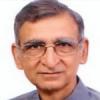With the loss of Atal Bihari Vajpayee, the ex-Prime minster of India, many obituaries poured in praising his liberalism and amicable nature. Many of them described him as ‘Right man in the wrong party’. This is the most prevalent image about him. He is perceived as a Right man for his accommodating nature during Governments under his leadership. His brilliant oratory stands out without any doubt. But was he is Right man?
The events happening in the aftermath of his demise are very disturbing. We painfully saw Swami Agnivesh, trying to pay homage to Vajpayee, was beaten up. We saw Sanjay Kumar an academic with Motihari Central University Bihar, beaten badly for his social media post criticizing Vajpayee. We also witnessed an elected Corporator of Aurangabad, sent to jail for refusal pay tribute-condolence to Vajpayee. On the other side his niece Vatsala Shukla accused that while BJP ignored Vajpayee for last nine years, when he was bed ridden, now they are trying to milk his legacy for political purpose. The Asthi Kalash Yatra, (procession with mortal remains), the program to scatter his ashes to different rivers of the country, are being taken out with great pomp, which many are seeing as a political gimmick.
The trajectory of life of Mr. Vajpayee is very revealing as far as his political ideology is concerned, notwithstanding his friendly overtures to Pakistan and peace initiative in Kashmir. While much is being made of his oratorical skills, jocular nature and accommodative spirit, what is being underplayed is his political ideology, the sectarian Hindu nationalism for which he worked all his life. He joined RSS at an early age and became well known for his poem, Hindu Tan Man Hindu Jeevan. (Hindu body-Soul: Hindu life). This was the time when Indian identity was becoming the major identity for the people of India. He also wrote an article in RSS mouthpiece Organiser, outlining his political agenda, the title of this aptly was ‘Sangh (RSS combine) is my soul’. Later in an article on the web he claimed that he had participated in the freedom moment. This claim of his was debunked by investigation by Frontline and it turned out that he was a mere onlooker in the procession of Quit India movement in his village Bateshwar. As per his won confession he did not participate in the procession. He named the leaders of movement and was released from the jail in couple of days. He was a part of RSS, whose Chief had given the instructions to keep off the 1942 Quit India movement. As a loyal RSS worker he did not participate in Quit India movement.
After Independence, the first major attempt to bring Cow on the forefront of politics was done on 6th November 1966, when armed Sadhus attacked the Parliament. Vajpayee gave a strong speech on the occasion. When Janata party leaders demanded (1977-1979) that Vajpayee and company who have joined the Janata party; break the connection with RSS, he along with others members of erstwhile Jansangh refused to break their connection with RSS; leading to break up of the party.
As far as Ram Temple movement is concerned, the perception is that he was not a part of that. As a matter of fact he gave the provocative speech on 5th December 1992, about doing the Kar Seva and the necessity to level the ground for that. In the aftermath of demolition; on one hand he stated that we are sorry to the nation (7th December 1992) on the other a week later he stated that it was the will of God and a month later “If the sentiments of majority are not respected, this is what happens.”
Ruchira Gupta, who was covering the demolition and was molested by Kar Sevaks, tells us that she was called by Vajpayee for a cup of tea, where he told her that she comes from a good family and she should not speak about what happened to her. Vajpayee had cultivated a soft image, and with this image he was trying to cover up the RSS combine’s crime of demolition. It is true that his name was pushed forward by Advani for Prime Minster-ship. The reason was plain and simple that while Advani was the main mobilizer for BJP, they needed the alliances with other parties for coming to power. That time Advani’s image as the demolisher of the mosque was an impediment. Vajpayee remained forthright in his loyalty to RSS agenda. In Staten Island, during his US trip, he stated that he may be a Prime Minster, but he is primarily a RSS worker. In the wake of anti Christian violence in Dangs, Gujarat, (1999) in keeping with RSS agenda he called for national debate on conversion, there was no word for the victims of violence.
Similarly much is made of his Raj Dharma advice to Narendra Modi during Gujarat violence 2002. There are reports that as a Prime Minster he had made up his mind to sack Narendra Modi. After seeing the support for Modi’s with BJP workers, he retreated and kept quiet. Not only that in the speech later he spoke the Narenda Modi thesis of Action-Reaction in a sophisticated way, saying that, “If a conspiracy had not been hatched to burn alive the innocent passengers of the Sabarmati Express, then the subsequent tragedy in Gujarat could have been averted. But this did not happen. People were torched alive.”As per him the train burning had not been condemned enough! He also articulated the RSS antipathy to Muslims saying that where ever there are Muslims, there are problems. All this part of RSS myth making and communal elaboration he put forward in a subtle manner!
As such Vajpayee came at a political phase when RSS combine needed electoral rooting. The divisive language had to be put with the sugar coating, and that’s what he did with great competence. No wonder the RSS ideologue Govindacharya called him Mukhota (Mask) of BJP.







Comments
Add new comment